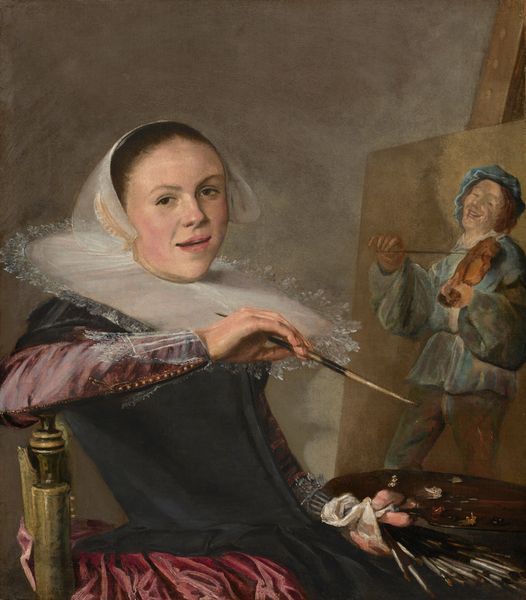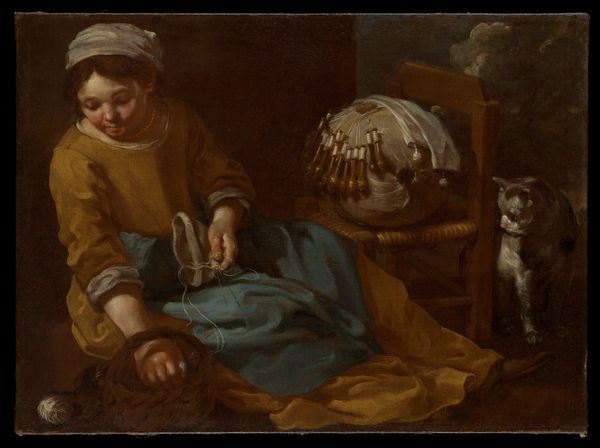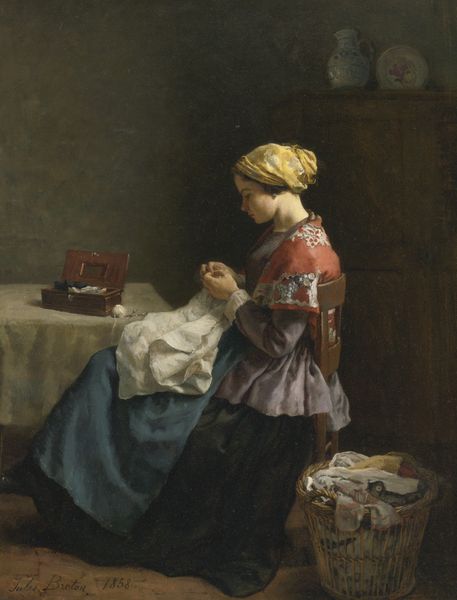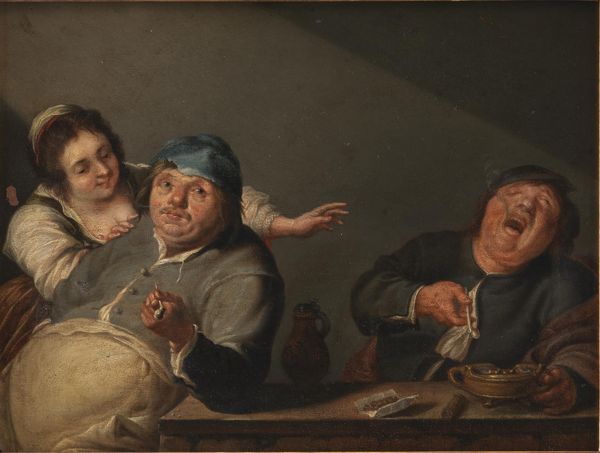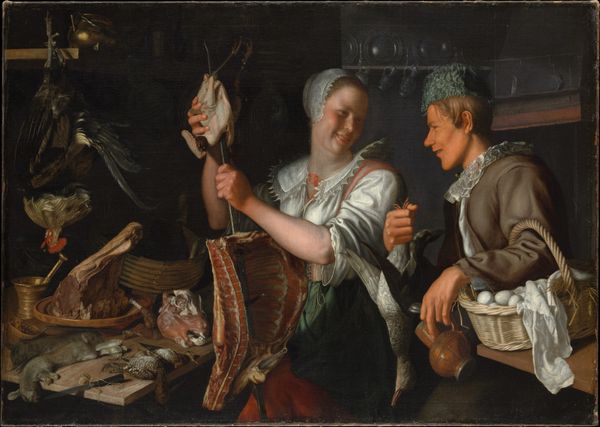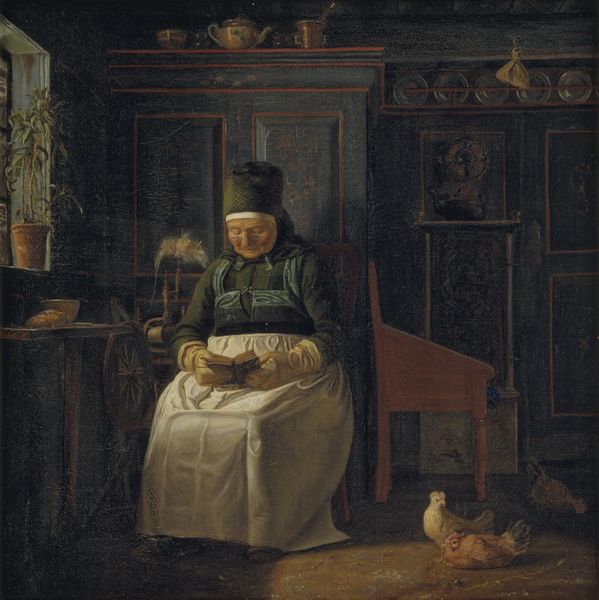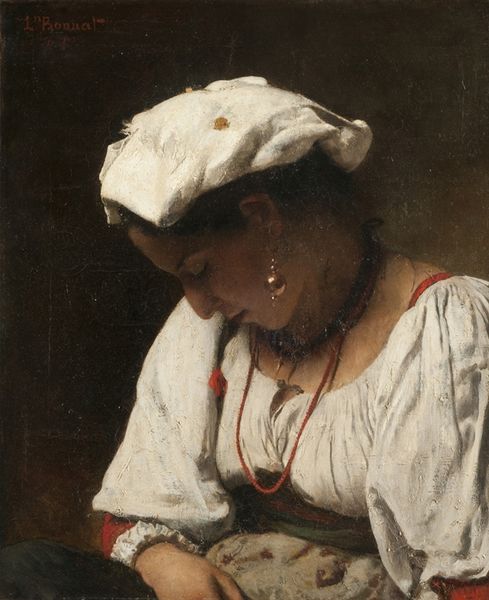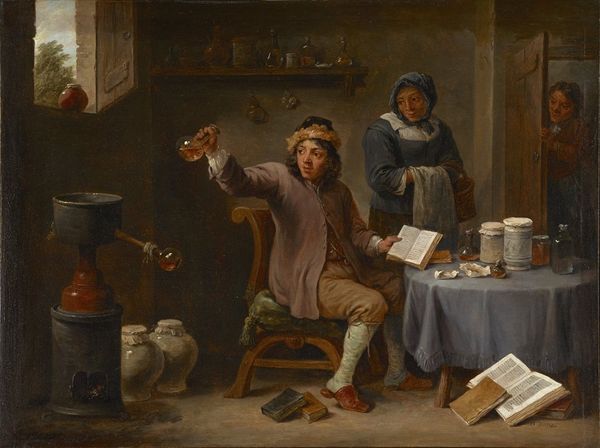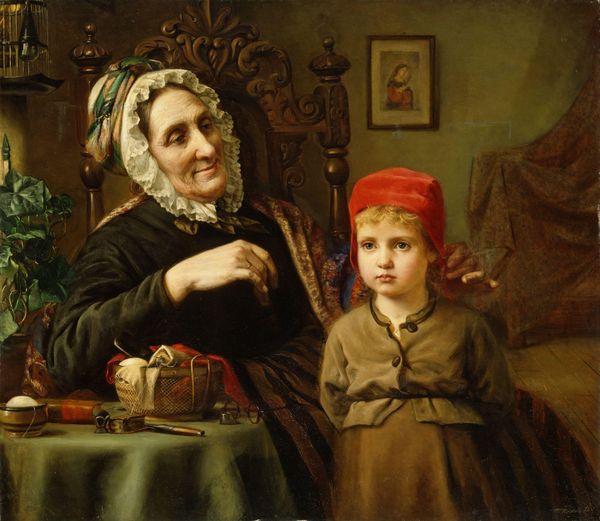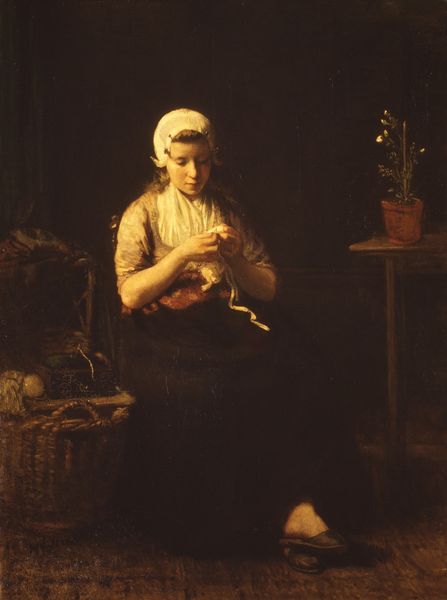
painting, oil-paint
#
baroque
#
painting
#
oil-paint
#
christianity
#
genre-painting
#
history-painting
#
portrait art
Dimensions: 60 x 103.5 cm
Copyright: Public domain
Curator: Here we have Diego Velázquez's "Christ in the House of Mary and Martha," painted around 1620. It's currently hanging in the National Gallery in London. Editor: What immediately strikes me is the way Velázquez renders the materiality of everyday life. The sheen of the copper pot, the glisten of the fish scales, the simple texture of the woman's garments... Curator: It's a fascinating piece in that it’s an example of early Velázquez exploring the integration of sacred themes within the quotidian reality of 17th-century Spain. It's genre painting elevated, almost. Editor: Elevated in what sense? The means by which he chooses to represent class in a sacred manner are really evident to me, from the working garments to the contents of the earthenware on the table. Are you hinting that a more idealized or baroque context may have improved its religious value? Curator: Not at all. The setting situates the divine in the context of labor and domesticity, drawing on the everyday concerns of its audience, and simultaneously offering religious insight. The background scene depicts the biblical story, but it is contained and seemingly commented upon by the figures in the foreground. Editor: Yes, exactly. It's as if the foreground is saying, "Look, faith has to exist in relation to daily labor. How will the work get done if everyone sits around listening to sermons?" Curator: A rather pointed commentary coming from the artist through his work for an era gripped in religious and societal conflict. Velazquez had an acute understanding of what his audience found familiar. Editor: There's almost a political charge to the materiality and the scene portrayed, wouldn't you say? Consider the implications for workshops producing art, who is in control of it, and who enjoys the product, both here, and in the narrative backdrop! It forces a crucial dialogue. Curator: Absolutely, the painting’s success is in generating dialogues between faith and work. And that dialogue resonates powerfully today, offering insights into both the art and social issues present and past. Editor: For me, looking closer at how ordinary the cooking implements are makes me see how radical it must have been to represent something like this in the Spanish Court. It helps re-establish the making of an artist in that milieu.
Comments
No comments
Be the first to comment and join the conversation on the ultimate creative platform.
